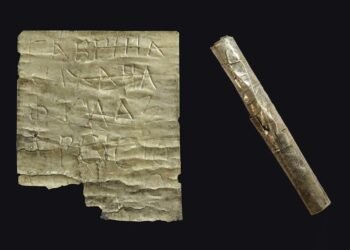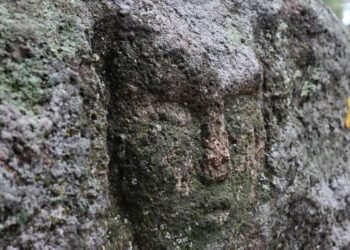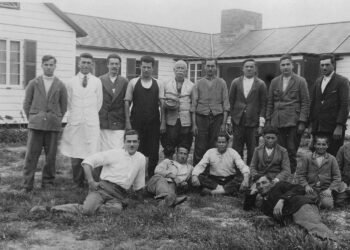Archaeologists in Lima, Peru, have discovered an ancient mummy from the pre-Hispanic era. The mummy found atop a hill near a professional soccer club’s practice field, has unveiled intriguing details about pre-Hispanic burial practices and rituals.
Positioned face up with long black hair, the male skeleton’s lower limbs were bound by a rope made of plant-based vines, providing a glimpse into the ceremonial aspects of the burial. Stones surrounded the mummy, which was buried approximately one meter below the surface.

The burial site was identified as a destroyed clay temple shaped like a “U,” a characteristic common in pre-Hispanic structures, according to Miguel Aguilar, an archaeology professor at Universidad Nacional Mayor de San Marcos.
Aguilar explained that the burial ceremony involved the use of coca leaves and seashells. The age of the mummy is yet to be determined through radiocarbon dating, but Aguilar suggested that the presence of old fly eggs near the skeleton indicates the body may have been exposed for several days before burial.
The discovery, made in the district of Rímac, known for its historical and cultural significance, adds to the more than 400 huacas (sacred places or oracles) in Lima, according to the Ministry of Culture. The hill, referred to as a “huaca” in Quechua, was home to remnants of ancient mud walls.
Pieter Van Dalen, an expert on the archaeology of the Peruvian coast and a professor at Universidad Nacional Mayor de San Marcos, emphasized the significance of vegetable ropes used to bind the mummy’s lower limbs, citing a similar discovery in a different part of Lima. Van Dalen explained that this practice is often seen in ceremonial contexts.
Excavations faced challenges, including the removal of eight tons of garbage covering the hill’s summit, adjacent to the training field and headquarters of the Sporting Cristal soccer club. Homeless individuals and drug addicts who frequented the area were relocated by the police.
The discovery aligns with previous findings of mummies and pre-Hispanic artifacts throughout Lima. Construction projects, such as installing natural gas lines or water mains, have occasionally revealed mummies, including those of children, inside large clay vessels.
Residents, like Hipólito Tica, have stumbled upon such artifacts, keeping their discoveries secret until permission from Peru’s Ministry of Culture allowed for their proper archaeological exploration.
The hill’s significance as a “huaca” suggests its association with rituals and sacred practices, further emphasizing the depth of historical knowledge and cultural practices in pre-Hispanic societies.


































